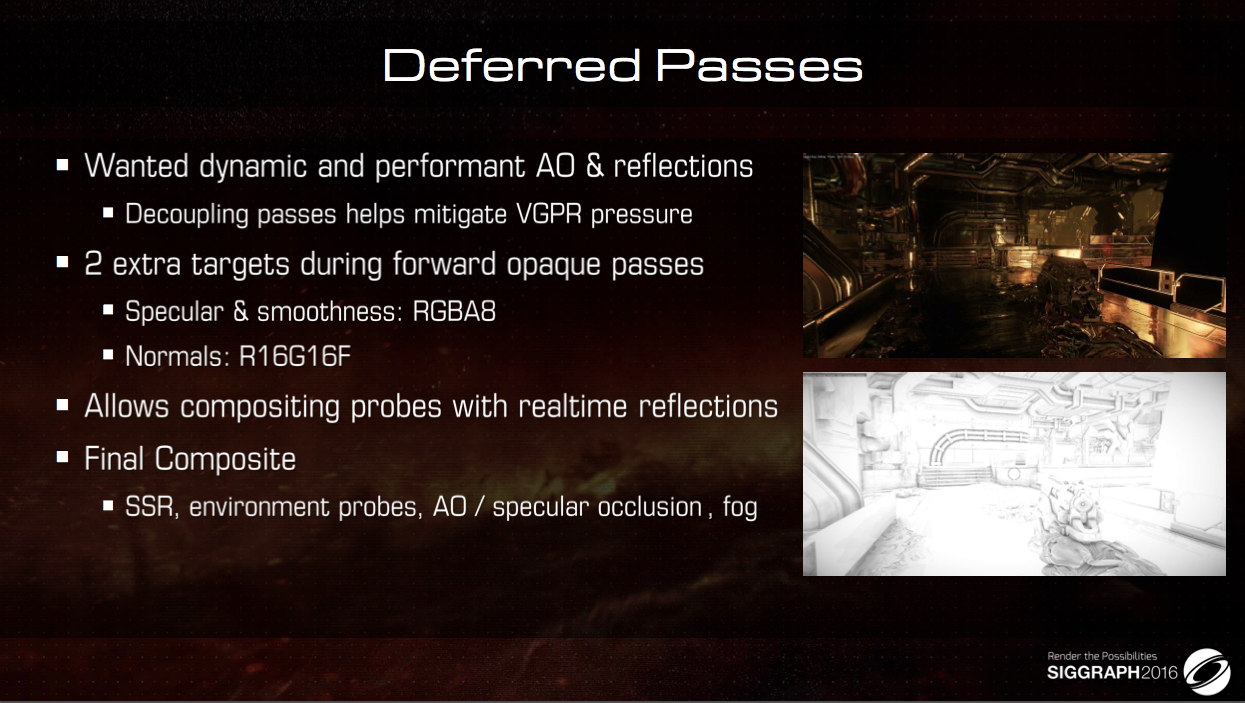Hi everybody!
Rendering opaque geometries using forward shading to HDR render target with MSAA and outputing in the same pass normals in view space in a second target, you have then to resolve to use them. Resolving the lighting result of the first render target is not a problem, you can simply use “ResolveSubresource”.
How to deal correctly with the normals which is multi-sampled?
Does it need a special shader? What is the correct processing by pixel?
The main goal is to apply SSAO after the opaque rendering pass using depth + normal.
The issue is depth and normal are multi-sampled and needs to be resolved.
Thanks for the help!








